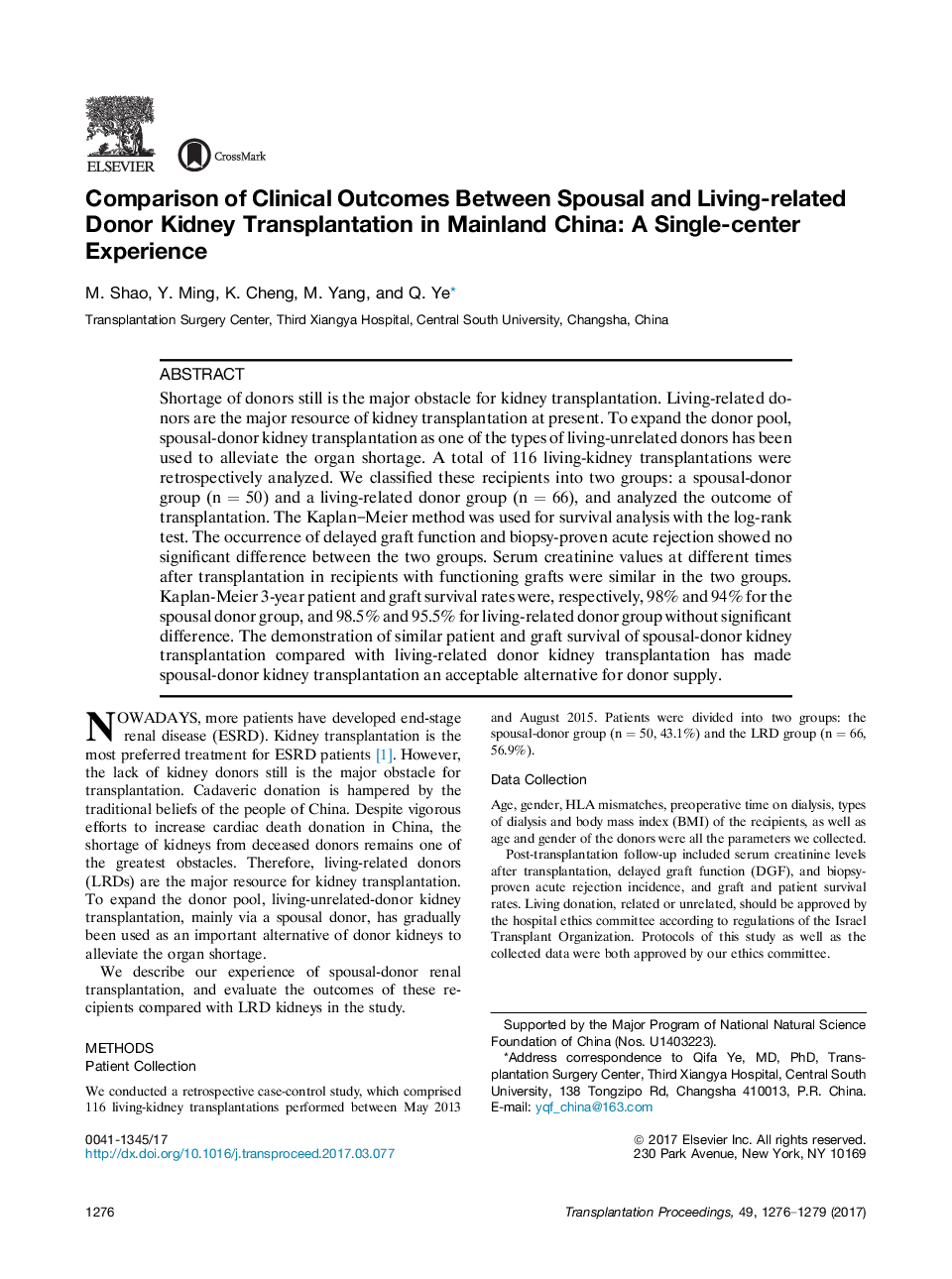| Article ID | Journal | Published Year | Pages | File Type |
|---|---|---|---|---|
| 5728680 | Transplantation Proceedings | 2017 | 4 Pages |
â¢The effect of spousal and living-related donor kidney transplantation has been compared.â¢Spousal donor and living-related donor kidney transplant recipients have similar outcomes during post-transplantation period.â¢Spousal-donor kidney transplantation can be used as an alternative of donor kidneys to alleviate the organ shortage.
Shortage of donors still is the major obstacle for kidney transplantation. Living-related donors are the major resource of kidney transplantation at present. To expand the donor pool, spousal-donor kidney transplantation as one of the types of living-unrelated donors has been used to alleviate the organ shortage. A total of 116 living-kidney transplantations were retrospectively analyzed. We classified these recipients into two groups: a spousal-donor group (n = 50) and a living-related donor group (n = 66), and analyzed the outcome of transplantation. The Kaplan-Meier method was used for survival analysis with the log-rank test. The occurrence of delayed graft function and biopsy-proven acute rejection showed no significant difference between the two groups. Serum creatinine values at different times after transplantation in recipients with functioning grafts were similar in the two groups. Kaplan-Meier 3-year patient and graft survival rates were, respectively, 98% and 94% for the spousal donor group, and 98.5% and 95.5% for living-related donor group without significant difference. The demonstration of similar patient and graft survival of spousal-donor kidney transplantation compared with living-related donor kidney transplantation has made spousal-donor kidney transplantation an acceptable alternative for donor supply.
